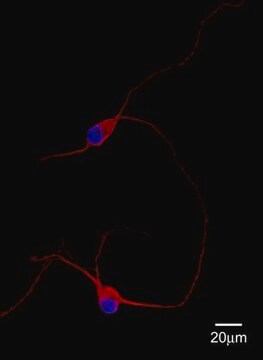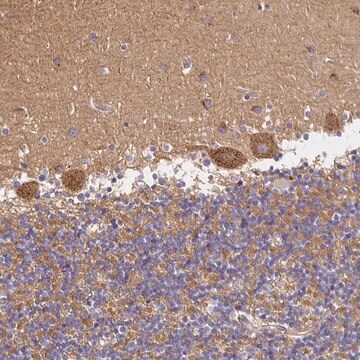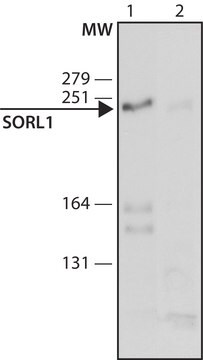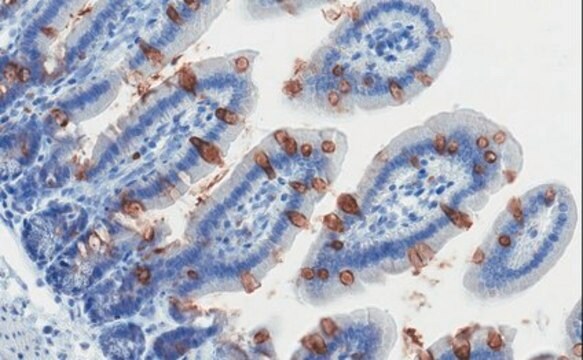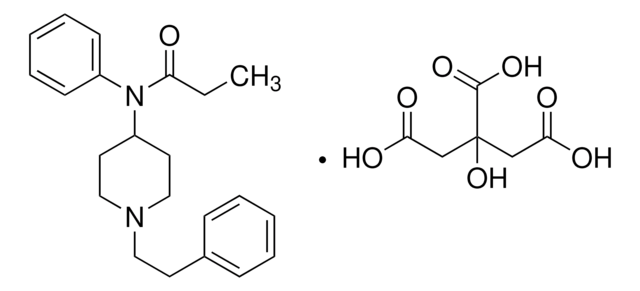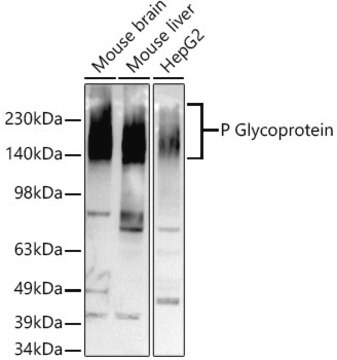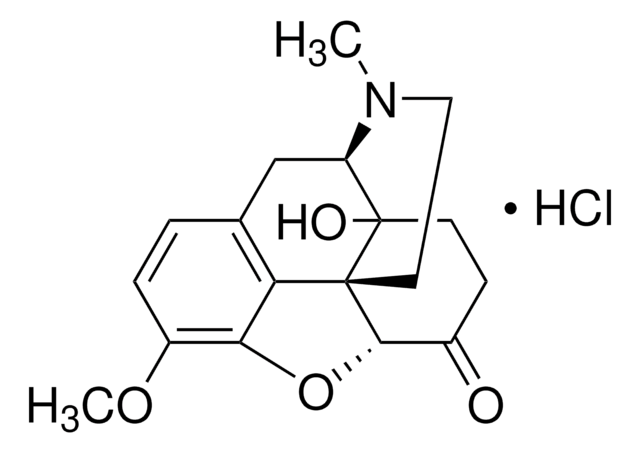MABN1793
Anti-SorLA Antibody, clone 20C11
clone 20C11, from mouse
Synonym(s):
Sortilin-related receptor, Gp250, LDLR relative with 11 ligand-binding repeats, Low-density lipoprotein receptor relative with 11 ligand-binding repeats, LR11, SorLA, SorLA-1, Sorting protein-related receptor containing LDLR class A repeats
About This Item
Recommended Products
biological source
mouse
Quality Level
antibody form
purified immunoglobulin
antibody product type
primary antibodies
clone
20C11, monoclonal
species reactivity
mouse, human
technique(s)
ELISA: suitable
immunocytochemistry: suitable
western blot: suitable
isotype
IgG1κ
NCBI accession no.
UniProt accession no.
target post-translational modification
unmodified
Gene Information
human ... SORL1(6653)
General description
Specificity
Immunogen
Application
Immunocytochemistry Analysis: A representative lot detected SorLA immunoreactivity primarily located at the cell body (soma) by fluorescent immunocytochemistry staining of 4% paraformaldehyde-fixed, 0.1% Triton X-100-permeabilized primary murine hippocampal neurons (Gustafsen, C., et al. (2013). J. Neurosci. 33(1):64-71).
Immunocytochemistry Analysis: A representative lot immunostained endocytic vesicular structures containing endocytosed sAPP by fluorescent immunocytochemistry staining of 4% paraformaldehyde-fixed, 0.1% Triton X-100-permeabilized HEK293 cells expressing exogenously transfected human SorLA (Gustafsen, C., et al. (2013). J. Neurosci. 33(1):64-71).
Immunocytochemistry Analysis: A representative lot detected the cellular localization of exogenously expressed wild-type and the FANSHY-to-6A4 mutant human SorLA by fluorescent immuncytochemistry staining of 4% paraformaldehyde-fixed, 0.5% saponin-permeabilized SH-SY5Y transfectants (Fjorback, A.W., et al. (2012). J. Neurosci. 32(4):1467-1480).
Western Blotting Analysis: A representative lot detected endogenous SorLA in sucrose gradient-fractionated mouse brain extracts as well as the expression of exogenously transfected human SorLA in HEK293 transfectants (Gustafsen, C., et al. (2013). J. Neurosci. 33(1):64-71).
ELISA Analysis: Representative lots were employed as the detection antibody for quantiating SorLA level in human brain cortical extracts as well as the level of exogenously expressed human SorLA in CHO cells (Caglayan, S., et al. (2012). Arch. Neurol. 69(3):373-379; Schmidt, V., et al. (2012). EMBO J. 31(1):187-200).
Quality
Immunocytochemistry Analysis: 4.0 µg/mL of this antibody immunostained SorLA endocytic vesicles in HEK293 cells expressing transfected human SorLA.
Target description
Physical form
Other Notes
Not finding the right product?
Try our Product Selector Tool.
Storage Class Code
12 - Non Combustible Liquids
WGK
WGK 1
Flash Point(F)
Not applicable
Flash Point(C)
Not applicable
Certificates of Analysis (COA)
Search for Certificates of Analysis (COA) by entering the products Lot/Batch Number. Lot and Batch Numbers can be found on a product’s label following the words ‘Lot’ or ‘Batch’.
Already Own This Product?
Find documentation for the products that you have recently purchased in the Document Library.
Our team of scientists has experience in all areas of research including Life Science, Material Science, Chemical Synthesis, Chromatography, Analytical and many others.
Contact Technical Service